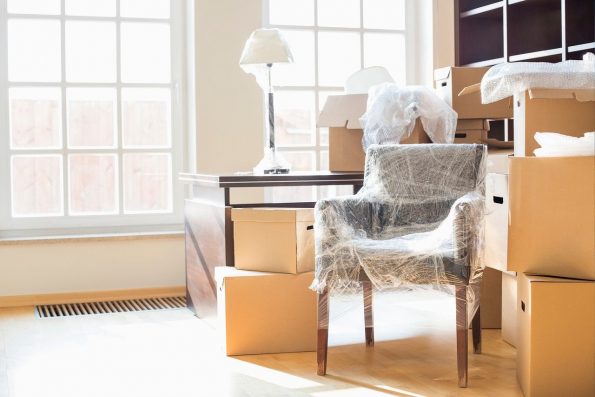Moving gives you a great opportunity to start things afresh. By shifting to another location, you will most likely find yourself working and socializing with people you have never met before. However, scratches and unsightly marks on your expensive furniture can dampen all the excitement of moving. Therefore, safeguarding the furniture should be right on top of your priority list when moving.

Though moving and shipping furniture to a new house is a daunting task, sticking to the following tactics will make the process a lot easier:
- Take Your Time
It could be tempting to speed things along to quickly get to the fun part of relocating your business when moving furniture. But you have to keep in mind that moving furniture is not a race. Moving gradually allows your muscles to adjust to the additional load you are putting on them. Take your time, devise a strategy, and plan where the furniture will go before you start moving things around in the office. Take regular breaks. You are better off devoting a whole day to settling in your new furniture than spending a week healing from a preventable accident. Slow and steady wins the race, and your body will thank you for that!
When relocating to a new location, renting shipping containers allows you to pack your belongings the way you choose, at your own pace. Instead of rushing to get everything in the moving truck before the end of the day, have a shipping container delivered to your driveway.
It allows you to store your valuables, access them when you choose, and retrieve them afterward.
- Disassemble The Furniture
It’s not possible to disassemble every piece of furniture. However, we strongly advise disassembling any items that can be disassembled. Furniture that must be disassembled includes tables, bed frames, and modular couches. To deconstruct the various objects, consult any manuals you have.
- Get The Necessary Packing Supplies
One of the most common misconceptions is that cardboard boxes and packing tape are all you need when moving. While these supplies offer some protection, you need to invest in packing materials, including a plastic stretch wrap, sofa, mattress covers, bubble wraps, and sealable plastic bags. These supplies are inexpensive and will serve as an additional layer of defense for your business’s furniture.
- Measure Everything
When moving furniture, measure the halls and doors you will be passing through to ensure the furniture does not get stuck. It might get damaged if you try to cram anything through a narrow corridor or doorway. Besides, it might cause you to drop the object, injuring you or a moving companion.
- Clear The Path
Before you start shifting things, make sure the pathway is clear. That way, you will be able to see the path more clearly and avoid tripping hazards along the way. As an additional safety measure, place a protective liner on the floor. For this, a roll-out plastic liner will serve as the ideal option. We would also recommend you take precautions against falling by wearing shoes with closed toes and non-slip soles.
- Put Nuts, Screws, And Bolts In Plastic Bags
There are many things to keep in mind while dismantling a piece of furniture. As you start taking apart the furniture elements, store everything such as bolts, nuts, and screws inside plastic baggies. Once done, mark all the baggies with the name of the furniture they contain. As a result, when you arrive at your new house and begin putting together your furniture, you will not have to hunt far for all the necessary materials.
- Use Specialized Moving Gear
Larger furniture pieces necessitate extra moving equipment, including a hand truck or dolly. Large chairs, dining tables, pianos, and billiard tables are just some of the heavy furniture that could be lifted using these tools. To hire a dolly or hand truck, you have to go to your nearest home depot.
- Leverage Padding
Antiques and mirrors may seem to require padding when shipping. However, any non-padded object may cause damage that you were not expecting. The majority of scrapes, dents, and other moving mishaps may be traced back to brittle, heavy furniture composed of materials like metal or oak. Placing edge protectors on the edges of your furniture and covering it in moving blankets can keep the dents and scratches at a safe distance.
- Team Up
Even if you are armed with the appropriate equipment, moving heavy furniture by yourself may be challenging and dangerous. Hence, it would be wise to team up with your co-workers when transporting your furniture. If you work by yourself, get some friends to help you move, or pay some movers to perform your task.
- Take Photos
If you hire a furniture moving company for all or most of your packing, document your items beforehand. It will help you to avoid any confusion in the future regarding the loss or breaking of the item. One of the easiest ways to keep track of your valuables is to snap pictures.
- Stretching Is A Must
Always remember to stretch before and after moving furniture. Even if you are accustomed to lifting large objects, moving furniture is not always easy. You will likely lift in odd postures. Relaxing your muscles and loosening up your body will help you avoid cramps. A good way to avoid stiffness the next day is to stretch after moving.
- Explore Coverage Options
You hired expert movers does not mean that your belongings will be safe. Many professional movers take great care while transporting household goods. However, this is not always the case. When it comes to moving big furniture, even the most seasoned and skillful movers have their share of mishaps. So, to be on the safe side, it is important to look into all of your insurance coverage options.
The Final Verdict
Most people do not like having to move furniture. You will work up a sweat, risk straining your back, and may need to seek the assistance of a few of your strongest workers. Moving the furniture will not be that difficult if you walk the tight line of the tips listed above.










